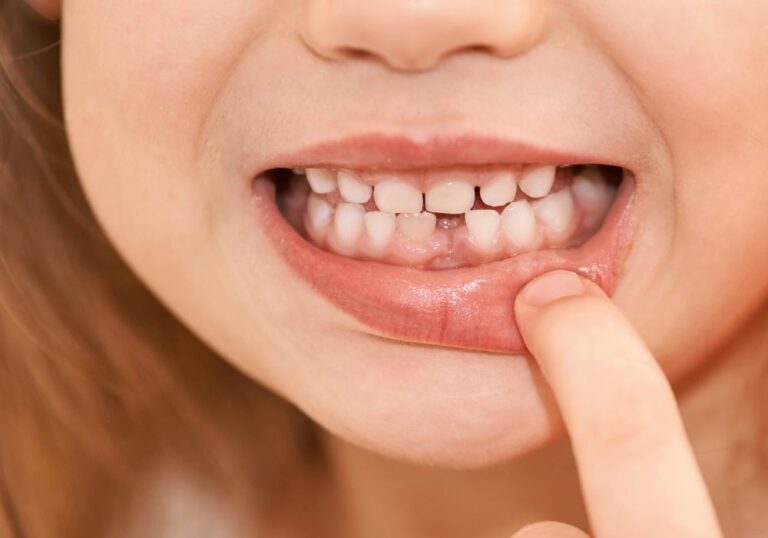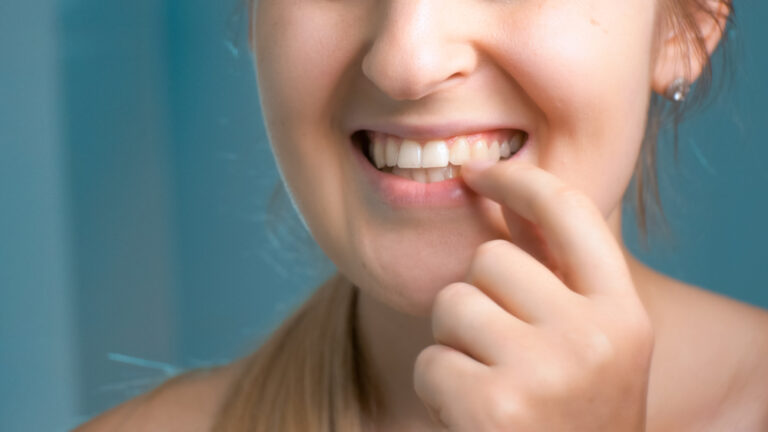Tooth calcification, also known as dental calculus or tartar, is the hard mineralized deposit that can form on teeth when plaque is not removed properly. Calcification occurs when calcium and phosphate minerals in saliva combine with plaque to create hard nodules on the tooth surface. Over time, these deposits can build up and begin to negatively impact oral health. Reversing calculus buildup is possible, but requires professional dental cleaning and improved oral hygiene habits. This article explores the causes of tooth calcification, its effects on dental health, and whether its formation can be reversed.
What causes tooth calcification?
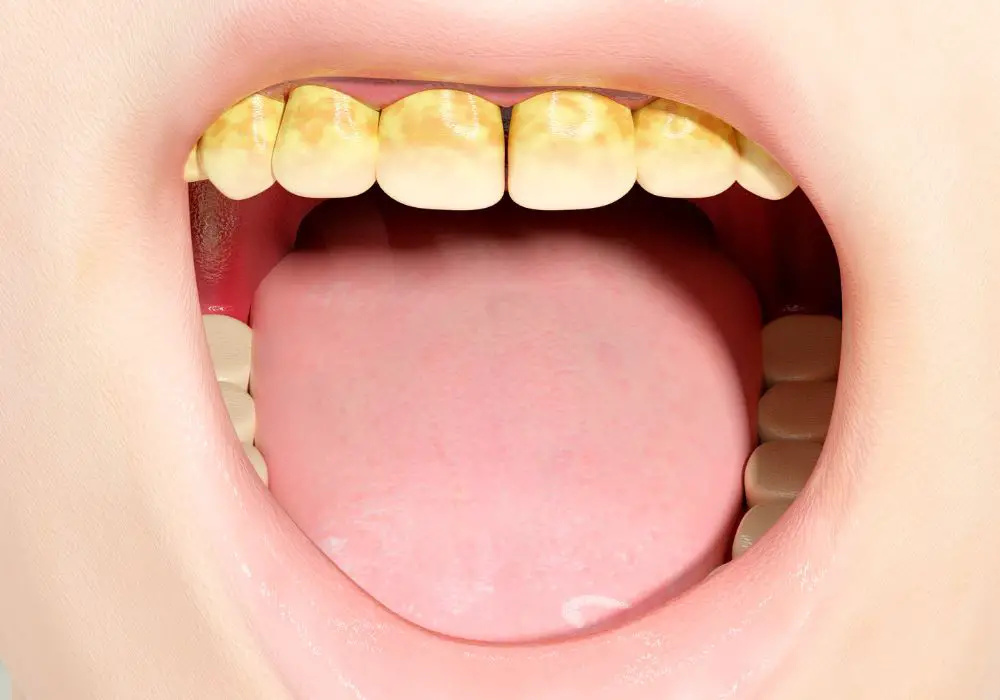
Tooth calcification is caused by plaque accumulation that then hardens into tartar or calculus deposits on the teeth. Here is a more in-depth look at the factors that promote plaque and calculus formation:
Plaque buildup
Plaque is a sticky, clear film of bacteria and food debris that continuously forms on tooth surfaces. Bacteria in plaque metabolize carbohydrates from food and produce acids that can damage tooth enamel over time. Plaque also releases toxins that inflame the gums. Proper daily brushing and flossing removes accumulated plaque before it can harden into calculus.
Binding with saliva minerals
Plaque provides an ideal surface for calcium and phosphate minerals naturally present in saliva to adhere. These minerals crystallize on the plaque film and harden into deposits of calculus or tartar. The longer plaque sits undisturbed on the teeth, the more calculus develops.
Areas prone to calculus buildup
Calculus tends to accumulate in certain high-risk areas where plaque is easily left behind:
- Along the gumline and where the tooth meets the gums
- In the grooves, pits, and fissures of chewing surfaces
- Around the base of the teeth near the gums
- Behind lower front teeth and around lower molars
- Around dental work like fillings, crowns, and braces
Thorough daily oral hygiene is critical for adequately cleaning these vulnerable areas.
Other contributing factors
- Dry mouth – Reduced saliva flow allows more calculus to form. Certain medications can cause dry mouth.
- Genetics – Some people are predisposed to calculus formation due to saliva composition.
- Foods/Drinks – Frequent wine, tea, or coffee consumption.
- Misaligned teeth – Irregular teeth make areas hard to clean.
- Gingivitis – Existing gum inflammation worsens plaque and calculus.
- Dental work – Crowns, braces, dentures, etc. have more surface area for calculus.
Effects of tooth calculus on oral health
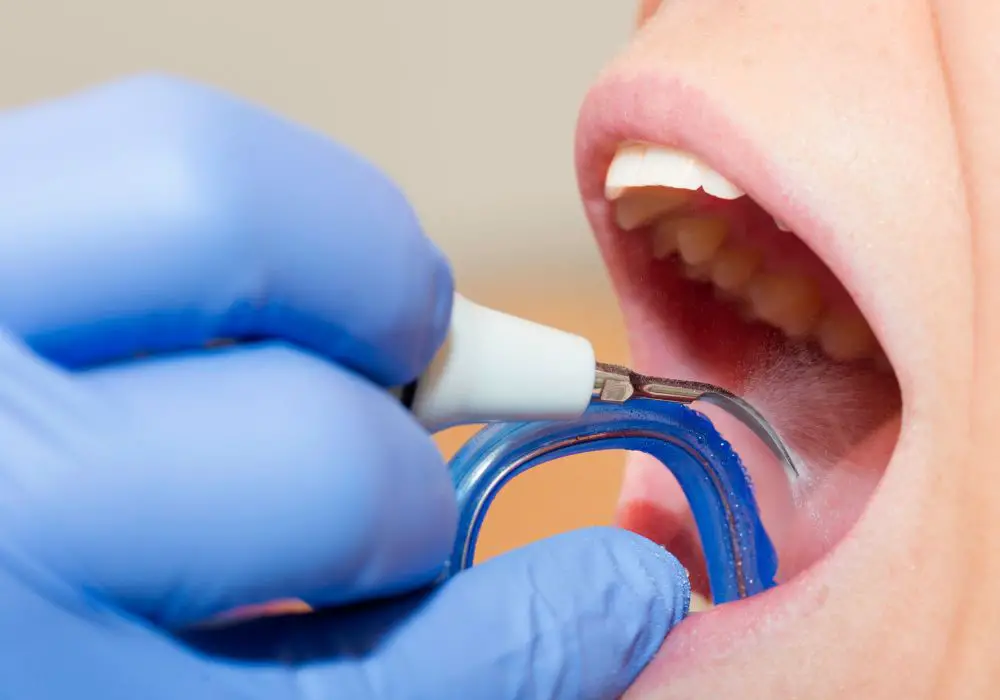
When allowed to accumulate over time, hard deposits of calculus can lead to a number of problems:
Irritation and inflammation
The rough texture of calculus provides an ideal surface for even more plaque, bacteria, and food debris to adhere. Plaque bacteria residing under calculus can release irritating acids and toxins that inflame the gums. This irritation worsens over time as more plaque accumulates if the calculus is not removed.
Gingivitis and periodontal disease
Chronic gingivitis (inflamed gums from irritation) can worsen over time into periodontal disease. As subgingival calculus builds up, it provides more space for plaque to grow below the gumline. Toxins from this plaque spread infection and chronic inflammation through the gums and supporting ligaments, degrading periodontal tissues. The gums may recede and pull away from the teeth.
Loss of teeth
In advanced cases of periodontal disease, significant bone loss and tissue deterioration around the teeth can lead to increased loosening and eventual tooth loss if no treatment is given. Keeping calculus under control is key to preventing this irreversible progression.
Tooth decay
Trapped plaque under calculus is more likely to produce damaging acids that erode and demineralize the underlying enamel. This decay process can lead to cavities, erosion, and tooth sensitivity.
Bad breath
Volatile sulfur compounds released from bacteria thriving within plaque and calculus deposits under the gumline can cause unpleasant halitosis or bad breath. Metabolic byproducts of this bacteria cause odors.
Aesthetics
Visible unsightly white or yellowish mineral deposits from calculus can form on front teeth, detracting from smile appearance.
Irritation of cheeks/gums
Larger overhanging calculus deposits, especially behind back teeth, can constantly rub against and irritate the tongue, cheeks, and gums while eating.
Damage to existing dental work
Calculus readily builds up on crowns, braces, dentures, bridges and other dental work. Over time, this can weaken dental work and lead to cracks or loss of structural integrity requiring repair or replacement.
As you can see, allowing calculus deposits to remain on the teeth comes with many risks that amplify over time as more plaque accumulates on calculus. Keeping calculus under control is key for long term oral health.
Reversing and removing established calculus
While daily brushing and flossing can prevent calculus from accumulating and hardening on teeth, only a professional dental cleaning can actually reverse and remove calculus once it has mineralized and adhered to the teeth.
Dental cleaning procedures
A hygienist has specialized tools and methods for thoroughly removing hardened calculus above and below the gumline:
- Scalers – Thin, rigid, metal dental instruments with finely angled tips. The hygienist uses scalers to meticulously scrape off adherent calculus deposits and firmly disrupt plaque.
- Ultrasonic devices – Use high-frequency sound waves to vibrate and break up calculus, making removal easier. Also helps disrupt plaque. Used in combination with scaling.
- Laser calculus removal – Laser energy precisely breaks up and detaches calculus with little vibration or heat. Very effective for moderate/severe calculus.
- Polishing – After calculus is scaled away, abrasive prophylactic paste and a rubber cup are used to smooth and polish teeth. Helps remove stains and remaining plaque biofilm.
- Localized antibiotic chips – Antimicrobial chips placed under the gums slowly release medication to prevent further infection after treatment.
Follow-up home care
After a thorough professional dental cleaning, daily oral hygiene is imperative to prevent calculus from quickly reforming:
- Brush thoroughly – Spend 2-3 minutes carefully brushing all surfaces to disrupt plaque before it hardens into calculus again. Angle the bristles under the gumline.
- Floss daily – Flossing removes plaque from between teeth and just under the gumline where it easily calcifies into tartar. Critical for plaque control.
- Antimicrobial mouthwashes – Rinsing daily with antiseptic solutions like chlorhexidine, cetylpyridinium chloride, hydrogen peroxide, or essential oils kills bacteria.
- Tartar-control toothpaste – Look for toothpastes containing pyrophosphates and zinc citrate to prevent plaque from mineralizing into calculus.
- Water irrigation – Devices like Waterpiks improve subgingival plaque removal between teeth and around braces.
- Regular dental cleanings – Typically every 6 months to catch calculus reformation early before it worsens.
With diligent daily plaque removal and routine calculus removal by a dental professional, new calculus can be minimized.
Natural home remedies for removing calculus
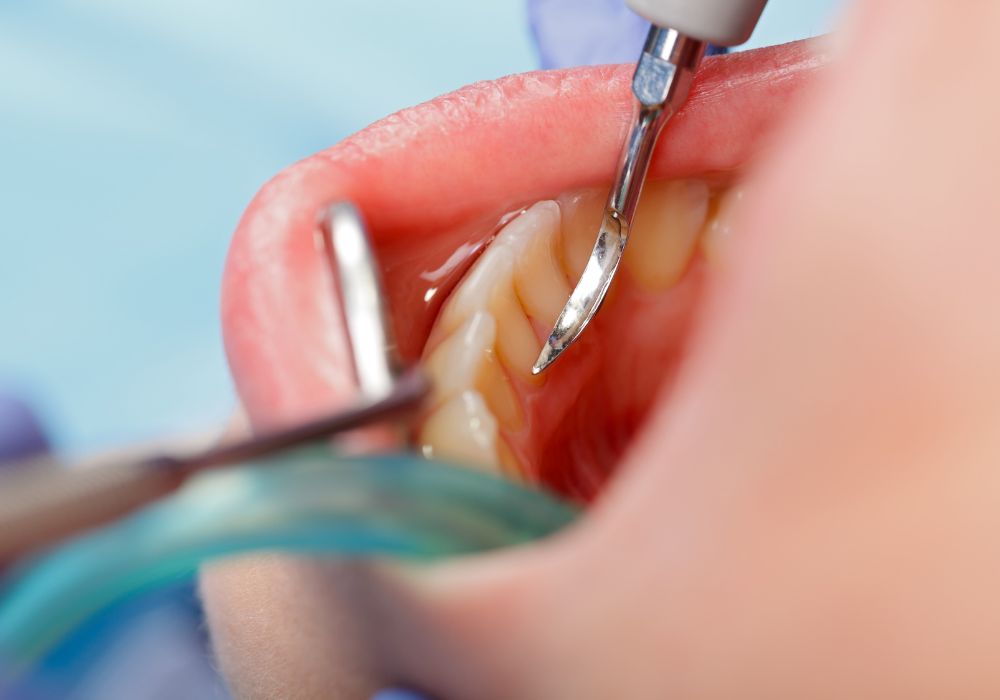
While professional scaling is mandatory for removing adhered calculus, some supplemental home remedies are claimed to help disrupt plaque and soften calculus when used regularly. However, these should not replace proper dental care.
- Oil pulling – Swishing oils like sesame, coconut, or sunflower oil can help loosen plaque and may inhibit calculus. Limited evidence exists.
- Apple cider vinegar – Malic and acetic acids may help dissolve mineralized deposits. Dilute and use as weekly rinse. Can erode enamel.
- Baking soda – Abrasive action of sodium bicarbonate may help buff away plaque. Use as toothpaste cautiously to avoid damaging gums.
- Lemon juice – Citric acid can help break down calculus deposits when directly applied. Use sparingly due to acidity.
- Hydrogen peroxide – The bubbling activity may help dislodge some tartar formation. Use diluted 1-3% solution as mouth rinse.
Use natural home remedies sparingly. They cannot substitute for professional dental calculus removal.
Can tooth calcification be permanently reversed?
While thorough professional cleaning and improved oral care can remove existing calculus, tooth calcification cannot be permanently reversed or cured. Some individuals are more prone to buildup due to factors like genetics, saliva composition, or tooth alignment. As long as natural teeth remain in the mouth, there is always a risk of calculus recurring if oral hygiene habits lapse. However, the formation of new calculus can be effectively reduced and managed with diligent home care and regular professional cleanings. Maintaining a daily regimen of careful brushing, flossing, and antimicrobial rinsing can help significantly minimize calculus buildup long-term. Avoiding dietary triggers like wine, tea, and coffee can also reduce incidence. With consistent, thorough oral hygiene habits, most individuals can keep new calculus at bay and maintain the health of their natural teeth for life. In cases of severe, recurrent calculus that does not respond to diligent hygiene efforts, alternatives like orthodontics or dental restorations may need to be considered to correct factors contributing to rapid calculus formation.
Frequently Asked Questions about Tooth Calcification
Here are answers to some common questions about tooth calcification:
What’s the difference between plaque and calculus?
Plaque is a sticky film of bacteria and debris on teeth. Calculus is the hardened mineral deposits that form when plaque is left undisturbed to mix with saliva minerals.
What are the first signs of calculus on teeth?
Early signs are small white or yellowish mineral deposits forming near the gumline or between teeth. Trouble flossing through an area indicates potential calculus.
What health conditions can too much calculus cause?
Calculus accumulations can lead to gingivitis, receding gums, periodontitis, tooth decay and erosion, bad breath, difficulty chewing, and eventual tooth loss in severe untreated cases.
How can I remove calculus at home before my dentist appointment?
You cannot remove adhered calculus yourself. Brushing and flossing can reduce loose plaque but only a dental professional can safely scale away hardened calculus.
Does fluoride prevent calculus formation?
Fluoride alone won’t remove existing calculus but it can strengthen enamel against plaque acids and help reduce bacteria to minimize more calculus formation.
Should I use lemon juice or vinegar to remove calculus?
No. Acidic home remedies like lemon juice, vinegar, or cola provide only minor disruption of plaque and can damage enamel. Avoid using them to remove calculus.
Conclusion
In summary, while existing tooth calculus cannot be cured or permanently reversed, its return can be minimized with diligent plaque control and professional cleaning. Removing calculus deposits eliminates bubbles of bacteria and plaque that cause more buildup. After calculus removal, strictly practicing daily brushing, flossing, medicated rinses, and regular dental visits offers the best chance to manage calculus long-term. With discipline and professional care, tooth calcification can be well controlled to maintain dental health for life.

